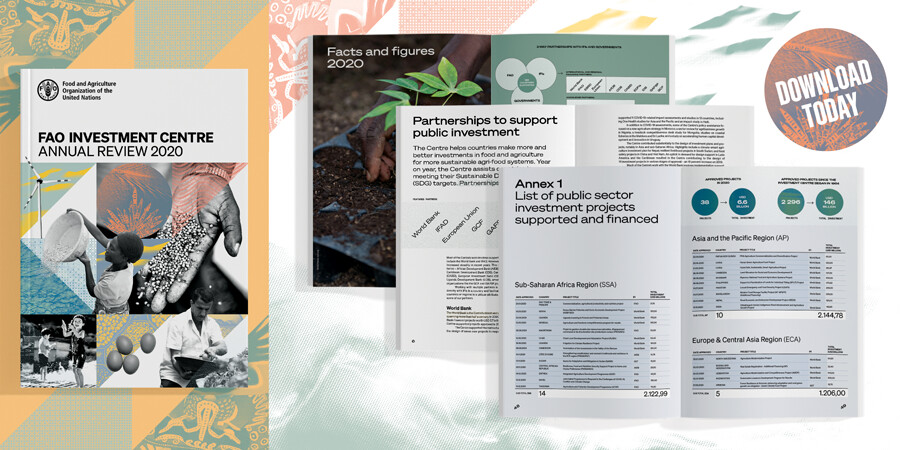Annual Review 2020 - at a glance
“Transforming our agri-food systems to be more efficient, inclusive, resilient and sustainable requires bold and innovative thinking.”
QU Dongyu, FAO Director-General
Who we are
Founded in 1964, the FAO Investment Centre helps countries make more and better investments in food and agriculture to reduce poverty and hunger, improve rural livelihoods and protect the environment.

In 2020, the Centre carried out 1 000 investment support activities (mostly virtually) in 120 countries. It helped design 38 investment projects approved for a total of USD 6.6 billion – a 16 percent increase over 2019.
Through its policy support, the Centre contributed to 31 agricultural strategies, 18 policy and analytical studies and 46 sector studies, plus 24 public-private policy dialogue processes. The Centre’s capacity building efforts resulted in 60 separate activities, and its new Knowledge for Investment (K4I) programme with research partners funded upwards of 50 titles to be published in 2021.
Partnerships to support public investment
Year after year, the Centre assists countries in meeting their national goals as well as their Sustainable Development Goal (SDG) targets. Partnerships are vital to this.

Partnerships to support private investment
Public sector funding alone is not enough to meet the SDGs by 2030. With that in mind, the Centre seeks out partnerships and innovative initiatives to increase responsible and sustainable private sector investments in food and agriculture, including instruments like blended finance.

Knowledge for investment
The Centre’s K4I programme fills a critical gap in investment-related resources and innovation-rich solutions. The Centre partners with research centres and international financing institutions to provide strong evidence, best practices and sound analytical work that contribute directly to improving the quality of investments.

The boundaries and names shown and the designations used on this/these map(s) do not imply the expression of any opinion whatsoever on the part of FAO concerning the legal status of any country, territory, city or area or of its authorities, or concerning the delimitation of its frontiers and boundaries. Dashed lines on maps represent approximate border lines for which there may not yet be full agreement.

